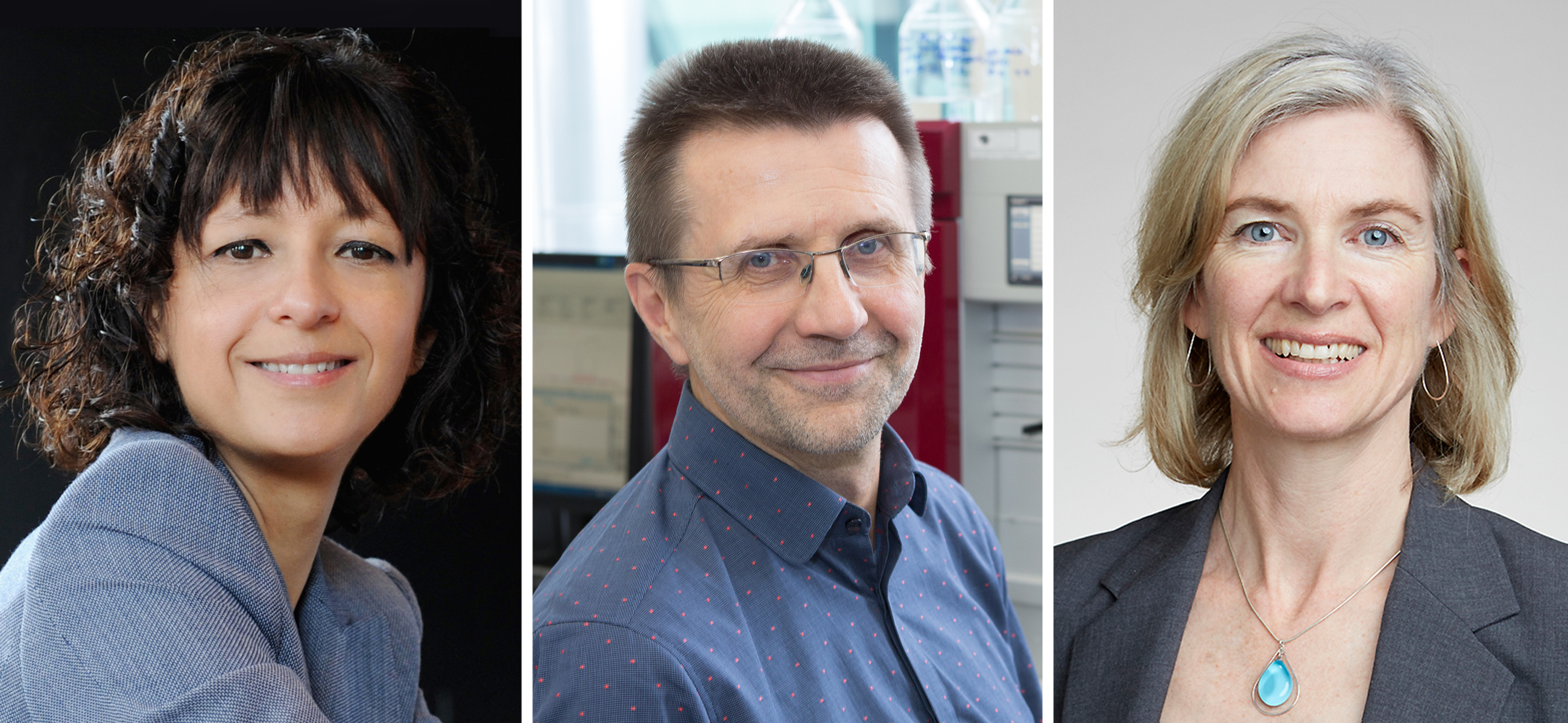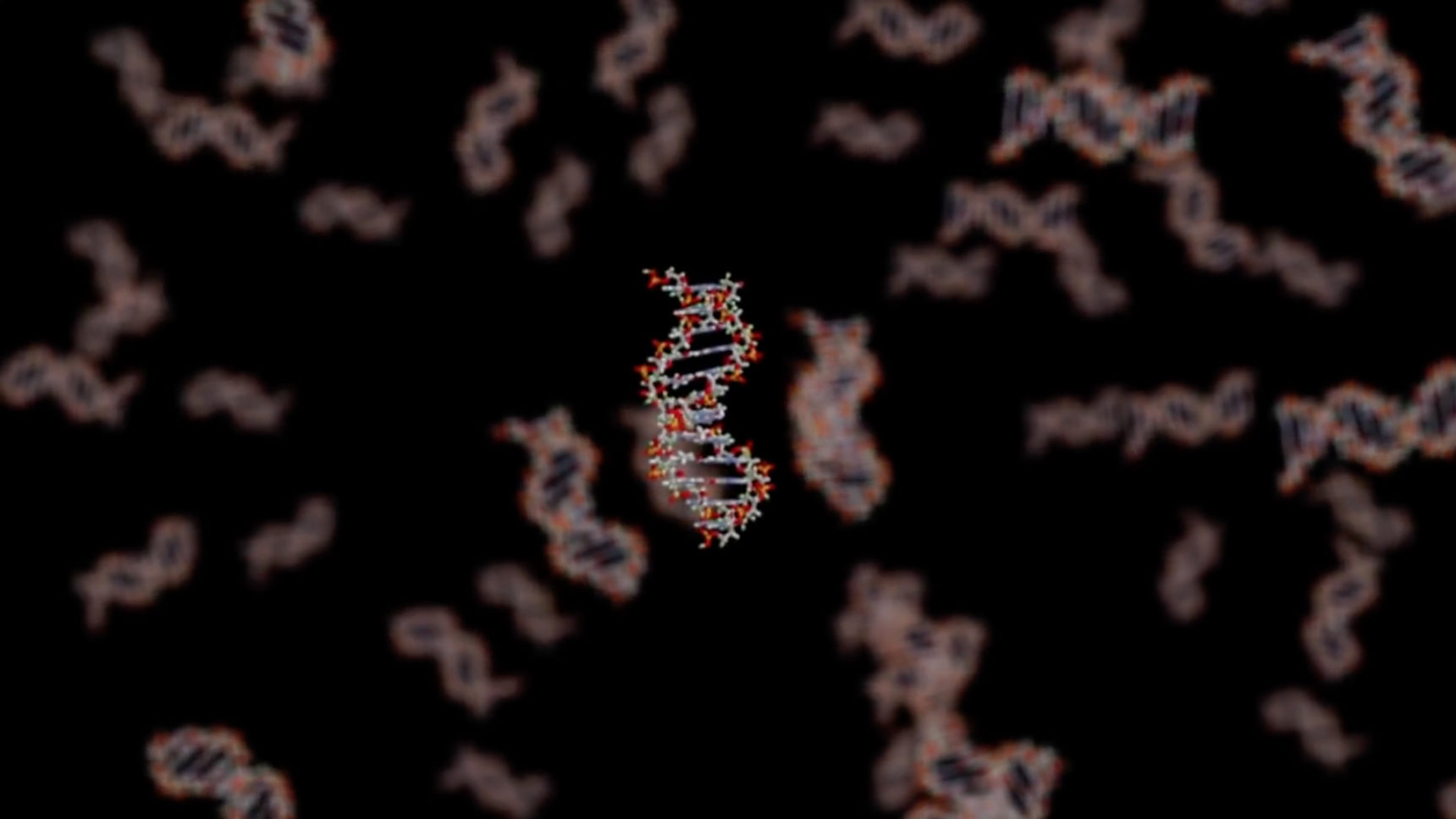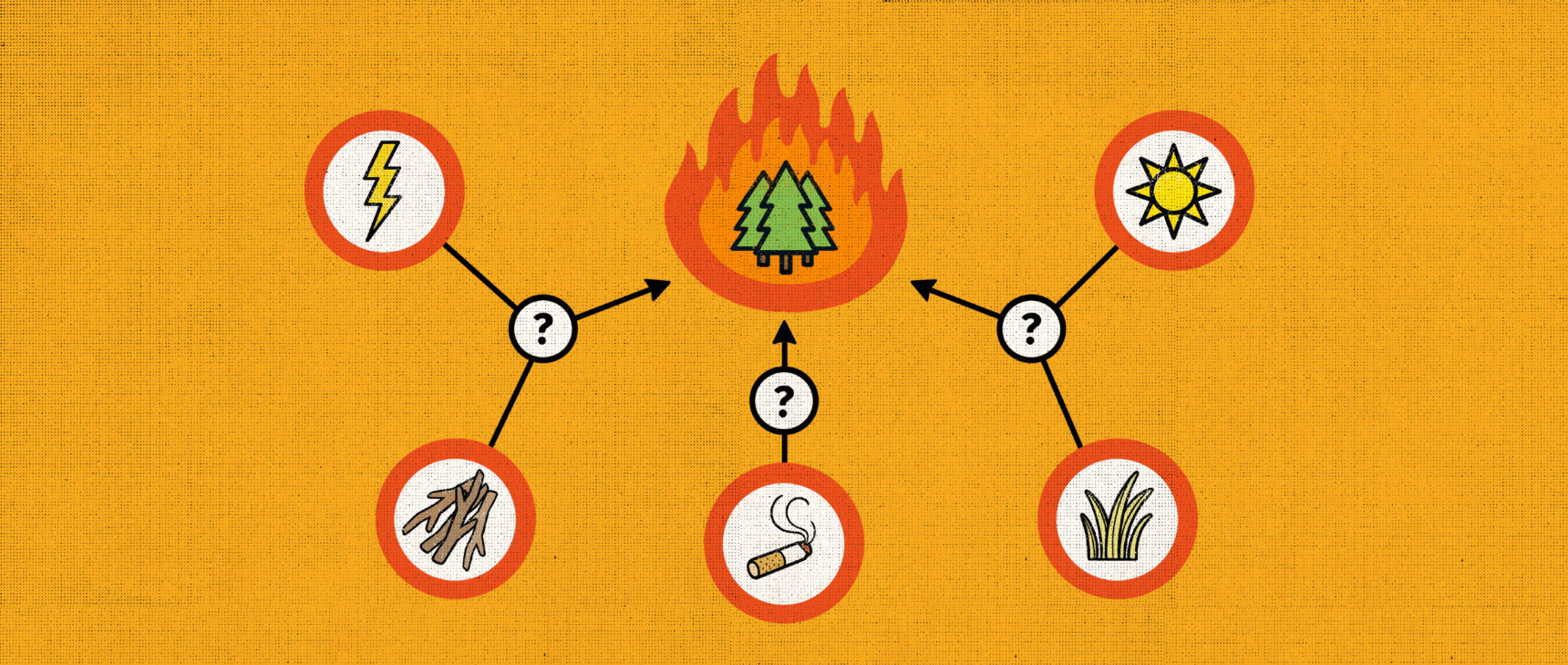CRISPR Gene-Editing Pioneers Win Kavli Prize for Nanoscience

Three scientists — Emmanuelle Charpentier, Virginijus Šikšnys and Jennifer Doudna (left to right) — have been recognized with the 2018 Kavli Prize for nanoscience for their roles in developing the genome-editing technology called CRISPR.
© Hallbauer&Fioretti; © Vilnius University; Duncan Hull
Introduction
Despite being introduced only a half dozen years ago, the simple and powerful DNA editing tool called CRISPR-Cas is now routinely hailed as one of the greatest biotechnology advances of the past century. This morning, three pioneers in the development of this nanotechnology — Emmanuelle Charpentier of the Max Planck Institute for Infection Biology in Berlin, Jennifer Doudna of the University of California, Berkeley, and Virginijus Šikšnys of Vilnius University in Lithuania — were awarded a Kavli Prize, among the most prestigious accolades recognizing outstanding accomplishments in nanoscience, astrophysics and neuroscience.
“A Swiss army knife that allows you to repair genes” is the way Charpentier has described CRISPR (as it’s usually called for short). Laura H. Greene, the chief scientist of the National High Magnetic Field Laboratory and a past president of the American Physical Society, called it “a breakthrough nanotool” at the announcement ceremony. “Its capabilities for positive innovations will really cause revolutions in many, many fields, including medicine, biology and agriculture.”
It’s all the more impressive that CRISPR is a technology directly inspired by odd features in the genomes of most bacteria: sets of highly repeated palindromic base sequences interspersed with stretches of other DNA. Bacteria create these by editing their own DNA to slip snippets of genes from invading viruses between the repeats. In this way, the bacteria and their descendants retain a “memory” of those viruses that helps the bacteria quickly mount defenses against similar infections.
Early on, Charpentier and Doudna recognized how the CRISPR system in bacteria and the Cas9 enzyme for cutting DNA might be combined and co-opted to create a system for precisely editing genomes. Their transatlantic collaboration yielded such a system, which they described in Science in June 2012. Meanwhile, Šikšnys and his European colleagues arrived independently and simultaneously at much the same solution. Their work was published in the Proceedings of the National Academy of Sciences in September 2012.
(Conspicuously absent from the list of honorees are names such as Feng Zhang of the Broad Institute and the Massachusetts Institute of Technology, who holds a patent on CRISPR technology, and George Church of Harvard University, who published early studies with Zhang that applied the technique to human cells. The fight over credit for CRISPR has been fierce and public, and will no doubt come to a head again when the work receives its inevitable Nobel Prize.)
In a 2015 story for Quanta, Carl Zimmer reviewed the history of CRISPR and its extraordinary potential, not only as an engine for biotechnology innovation but as an instrument for basic biological research.
Part of what many find either exciting or daunting about CRISPR is that it could be used to make “gene drives” — special gene-editing assemblies of DNA that would spread to all of an individual’s offspring and could eventually add or eliminate a trait from an entire population in the wild. Gene drives have long seemed tempting to researchers who would, say, like to make mosquitoes that are incapable of carrying malaria, but a technology for making them was unavailable. CRISPR changed that. But as Brooke Borel reported in a pair of stories from 2016, scientists aiming to redesign wild populations with CRISPR gene drives may find that evolution resists them at every turn and that controlling the spread of gene drives to where they’re wanted may be much trickier than it seems.
In addition to the nanoscience award, the 2018 Kavli Prize in astrophysics went to Ewine van Dishoeck of Leiden University in the Netherlands for her studies of the chemical processes that shape the growth and evolution of interstellar ices. The behavior of these materials pivotally affects how stars and planets accrete out of the diffuse, cold interstellar medium. Van Dishoeck and her group led the way in bringing quantitative understanding to this subject.
This year’s Kavli Prize for neuroscience was shared by James Hudspeth of the Rockefeller University, Robert Fettiplace of the University of Wisconsin, Madison, and Christine Petit of the Pasteur Institute in France. Hudspeth and Fettiplace made independent, complementary discoveries about how our sense of hearing arises from the conversion of vibrations of the tiny hair cells in the inner ear into nerve signals. Petit identified more than 20 genes that crucially govern the development of the inner ear and hearing, and she showed how mutations of those genes contribute to forms of hereditary deafness.
Committees organized by the Kavli Foundation, the Norwegian Academy of Science and Letters and the Norwegian Ministry of Education and Research selected the winners, who will be honored with gold medals at a September ceremony in Oslo. Each prize comes with a $1 million award to be split between the awardees.




